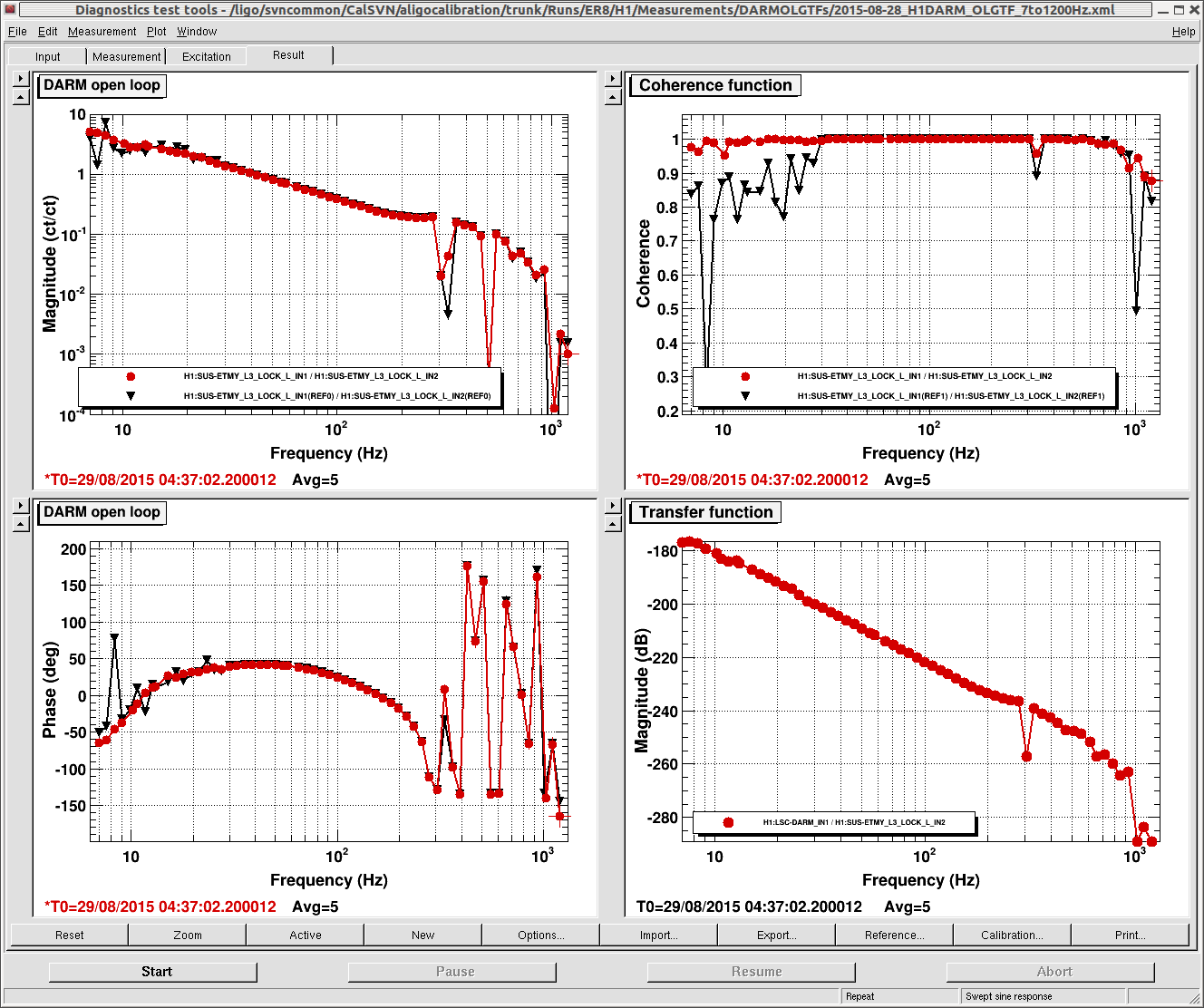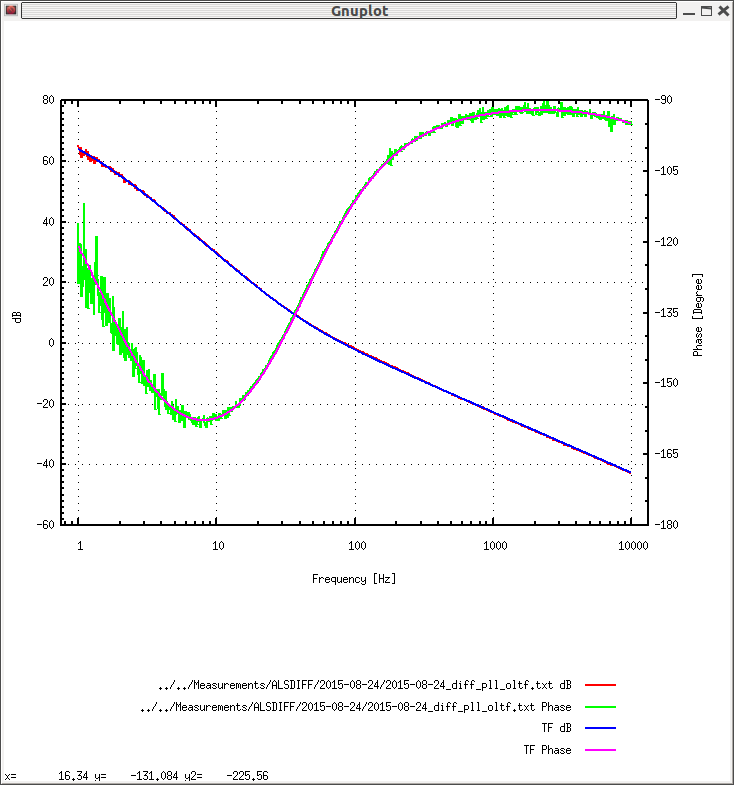J. Kissel, K. Izumi I've finished preliminary analysis on the data from Wednesday and Friday's suites of actuation function measurements (see LHO aLOGs 20940 and 21005). I've found that all methods, PCAL (using a very-well-calibrated power meter to measure the power of light pushing the test mass for reference), ALS DIFF (using the DIFF VCO oscillator as a frequency reference), and Free-swinging Michelson (using the red laser's wavelength for reference) are consistent with each other. Further, they identify that there are systematics in a simple model of the QUAD actuation strength that we've been using. However, without quoting any precisely quantified uncertainty (because the residuals are frequency dependent), I imagine all methods will agree to better than 10%. One good result: it appears that after releaving the charge post-ER7 (LHO aLOGs 19234 and 19211), and continued efforts to measure and keep that charge small (e.g. LHO aLOG 20968), have cleaned up the electrostatic drive strength, which are now far more consitstent between ETMX and ETMY (at roughly 2e-10 [N/V^2]). As a tease (which hopefully won't cause too much alarm or confusion -- be prepared for these to change a lottle), I attach plots of the current residuals between model and measurement. Bear with me while I take the next steps, which are to - functionalize the analysis scripts so we can easily process future measurements, - have those functions spit out their individual measurement results so they can be compared with each other (the comparison of which is another function to write), and - make sure that all the scripts are using the output of the latest DARM model and parameter set, instead of recreating a naive model from the matlab QUAD's [m/N] and knowledge of the electronics chain. - finish processing results from all the of the electronics chain measurements to identify if frequency-dependent systematics lie in there - Update / refine the DARM model parameters to squash the frequency-dependendent residual to as small as possible, such that we can be confident in professing number with properly quantified uncertainty. What has NOT been included in the naive actuation model: - 16k IOP up-sampling filter - Analog AA filter - Any of the un- or poorly-compensated poles and zeros of the ESD drivers - The recently found mis-match between expected and reality regarding the UIM driver's poles and zeros (LHo aLOG 20846) I have a high degree of confidence that these are the reasons for the residual frequency dependence. In other words, these be resolved once I switch to using the full DARM model's actuation chain. That being said, suggestions are welcome as to what else the discrepancies might be. ----------- We tried to get another round of measurements today, but we got totally blasted by a 40+ [mph] wind storm. Kiwamu will be coming back tonight to make the measurements once the wind has died down (which it has already begun to do). ----------- The latest versions of the analysis scripts have been committed to /ligo/svncommon/CalSVN/aligocalibration/trunk/Runs/ER8/H1/Scripts/ ALSDiff/analyze_alsdiff_data_20150826.m ALSDiff/analyze_alsdiff_data_20150828.m FreeSwingMich/analyze_mich_freeswinging_data_20150826.m FreeSwingMich/analyze_mich_freeswinging_data_20150828.m PCAL/analyze_pcal_data_20150826.m PCAL/analyze_pcal_data_20150828.m




















